Championing Change: Back To School Sponsorship
It’s this time of the year!
The children in London, New York, or Singapore are excited to go back to school, meet their new teacher, and discover their new classroom! However, “back to school” means sadness and hopelessness for some children in Southeast Asia. Simply because they see their friends wearing their uniforms on their way to school, but they have to stay home to do the chores.
At Children of the Mekong, we want to give the chance to every child to sit at a table and learn!
Join us in championing change. Sponsor a child today!
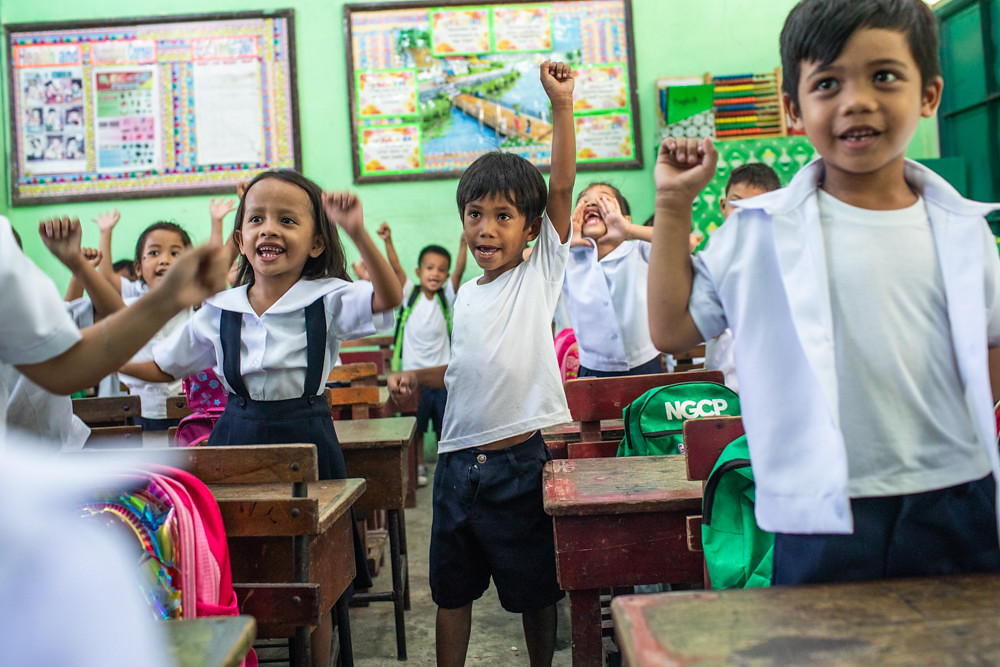
WHY SAN LUIS IN THE PHILIPPINES?
Between jungle and mountain, in this isolated region in the north of the country, it is difficult if not impossible for the poorest families to send their children to school without the help of sponsorship. By sponsoring a child in San Luis, you’re helping them to go to school and take control of their future!
MEET THE CHILDREN FROM SAN LUIS
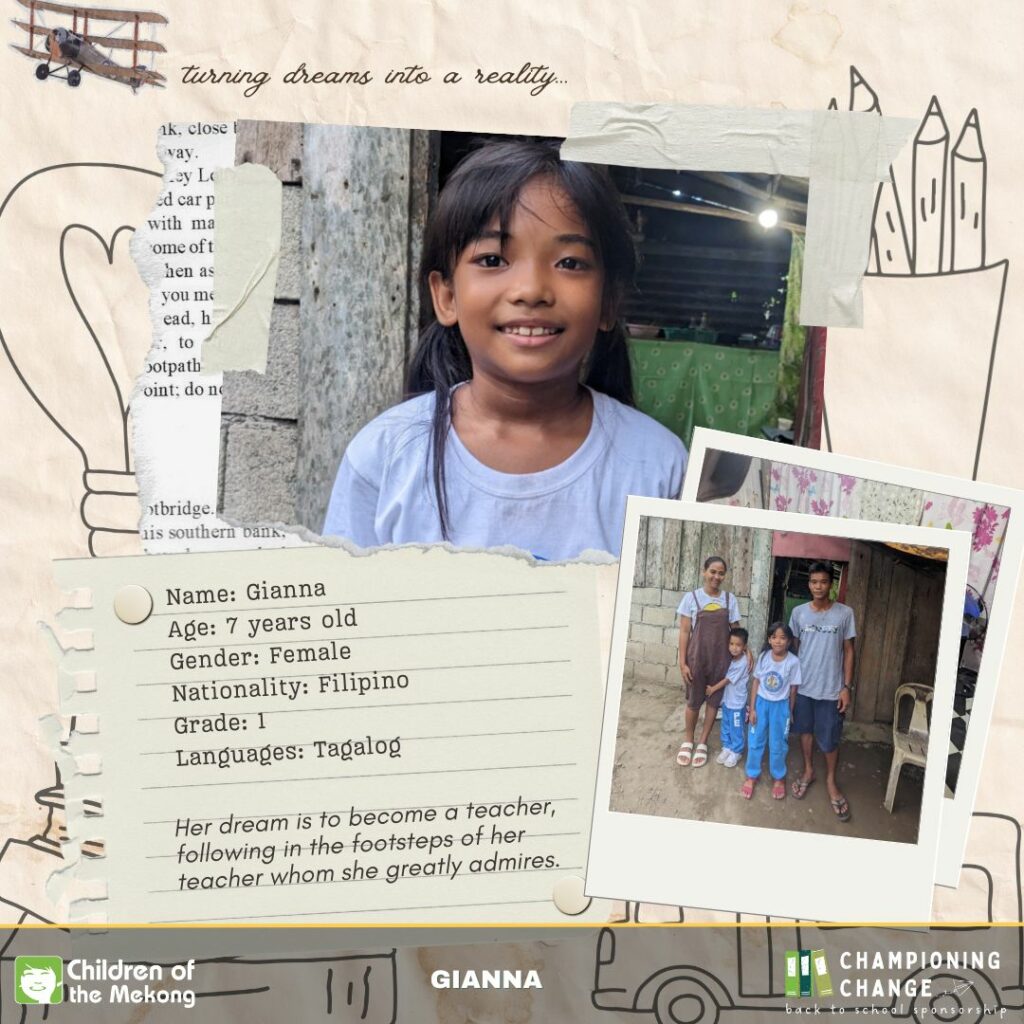
Gianna is a 7-year-old girl from San Luis, in the Philippines. Her parents do not have fixed jobs and they struggle to meet both ends. Her dream is to become a teacher, following the footsteps of her teacher whom she greatly admires. Sponsoring Gianna will allow her to achieve her dream.
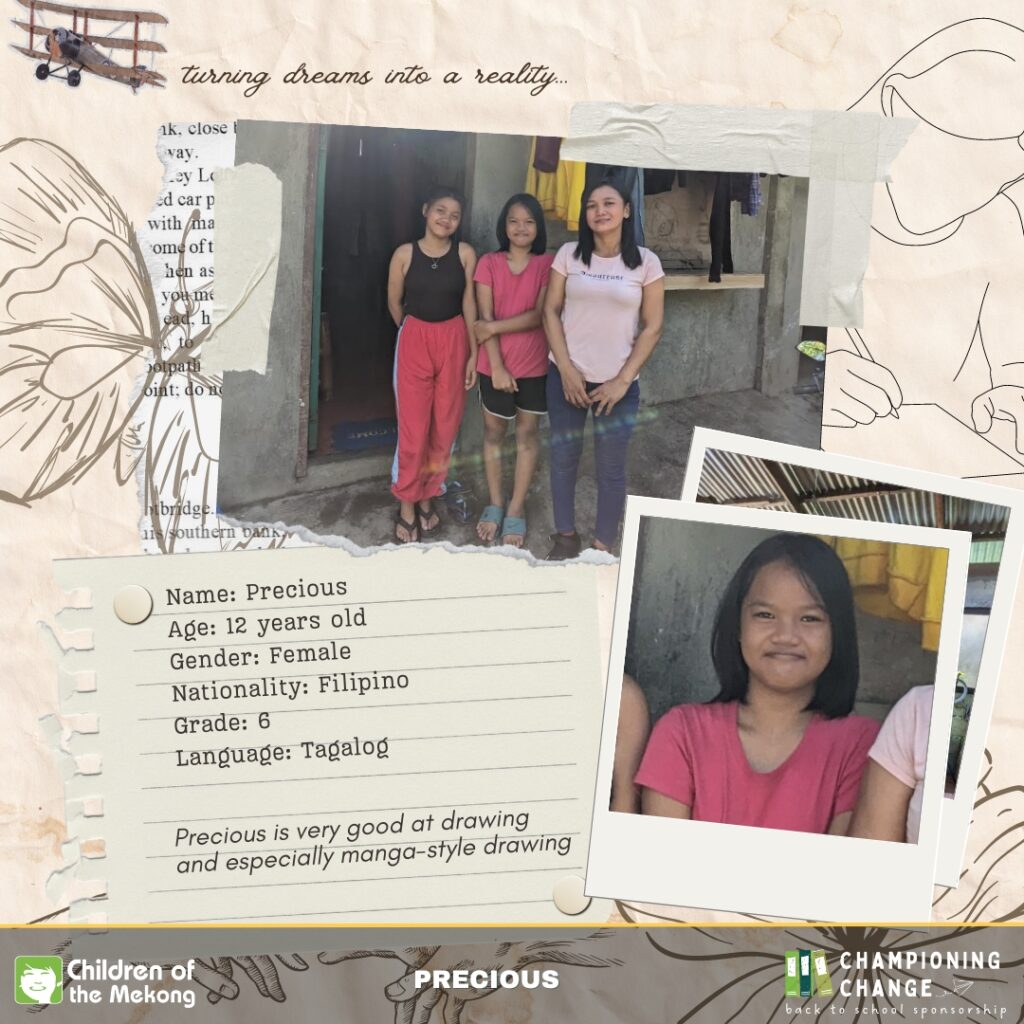
Precious is a 12-year-old girl from San Luis, the Philippines. She lives with her mother and two brothers and their dad is in prison. She is very good at drawing, especially manga-style drawing. A sponsorship will give her the chance to continue her schooling despite the hardship of her life.
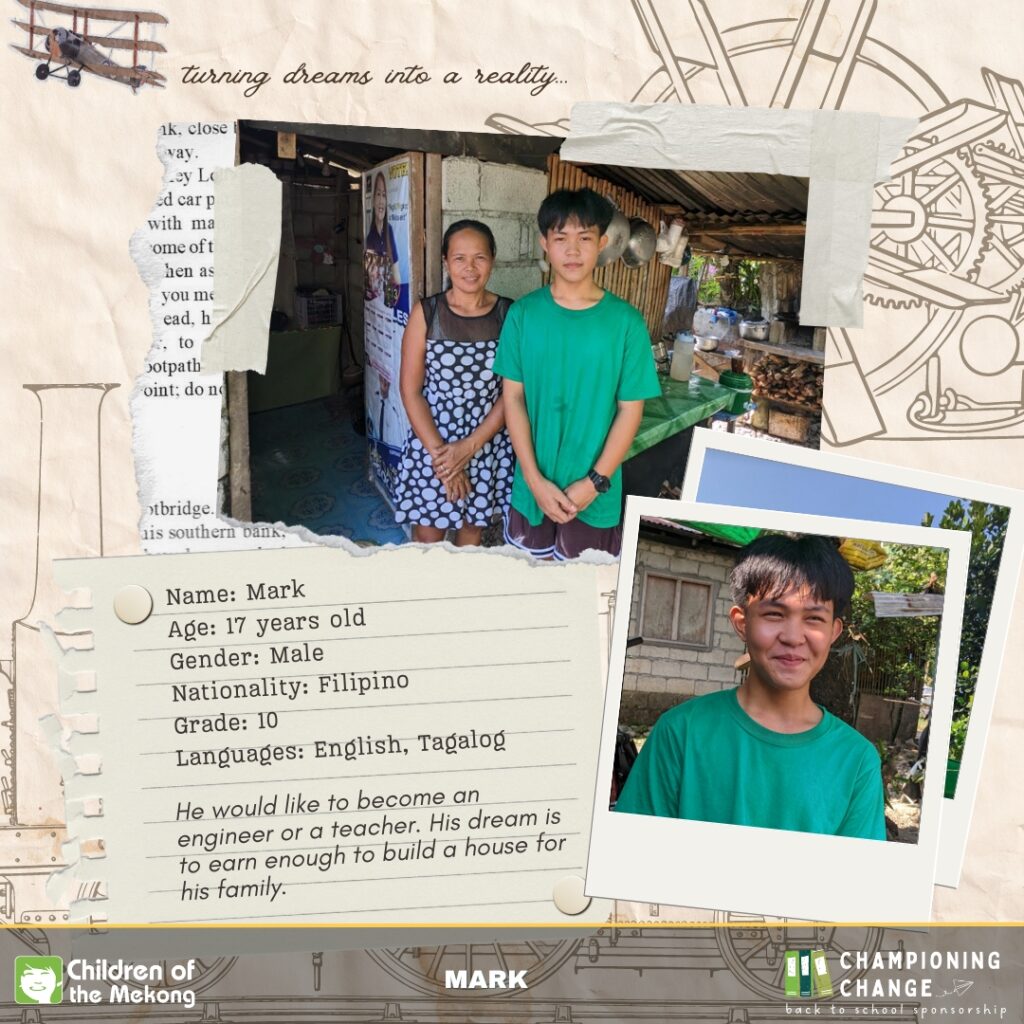
Mark is a 17-year-old boy from San Luis, the Philippines. He lives with his mum, stepfather, and seven siblings. His dad passed away two years ago. He would like to become an engineer or a teacher. His dream is to build a house for his family. You can help him achieve his dream with a sponsorship!
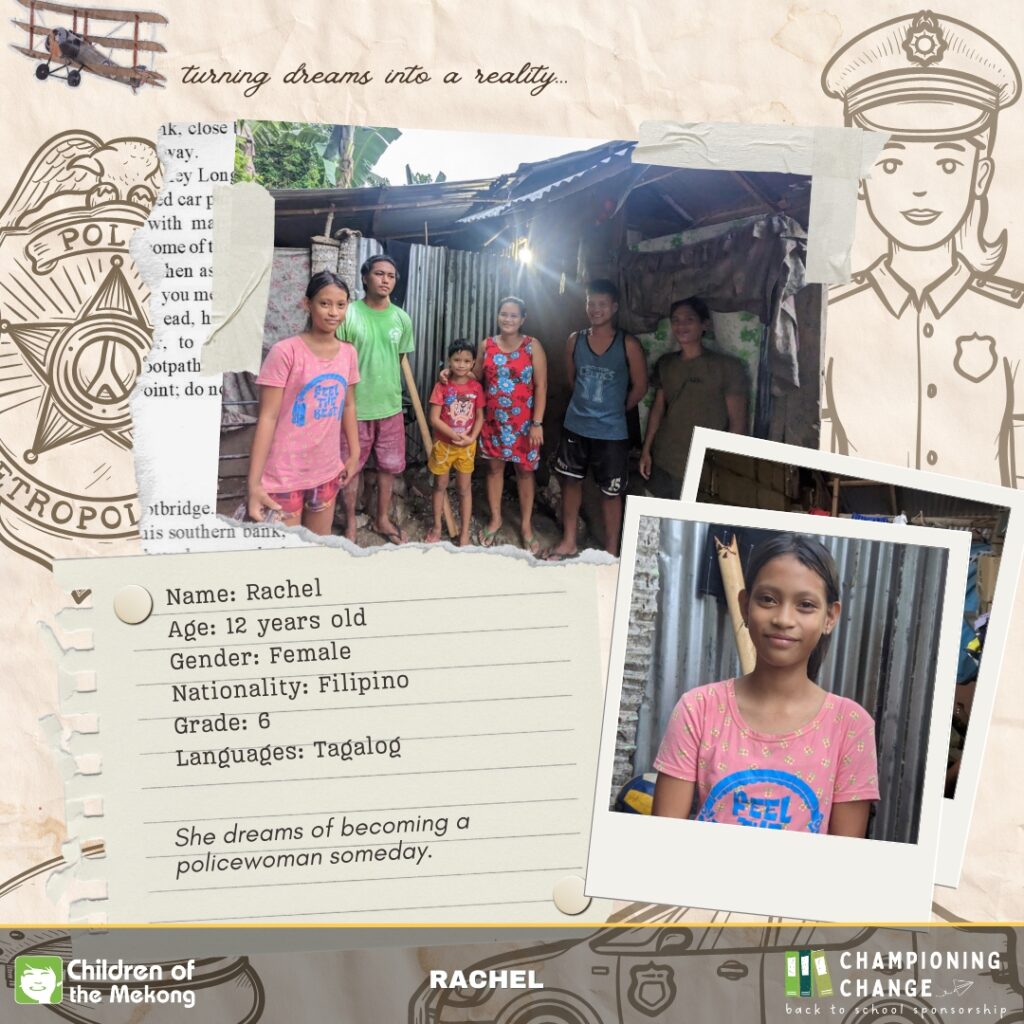
Rachel is a 12-year-old girl from San Luis, Philippines. Her parents went off to start a new life and abandoned her and two of her siblings in their family home. They live by themselves, and a sponsorship will allow her to continue her education.
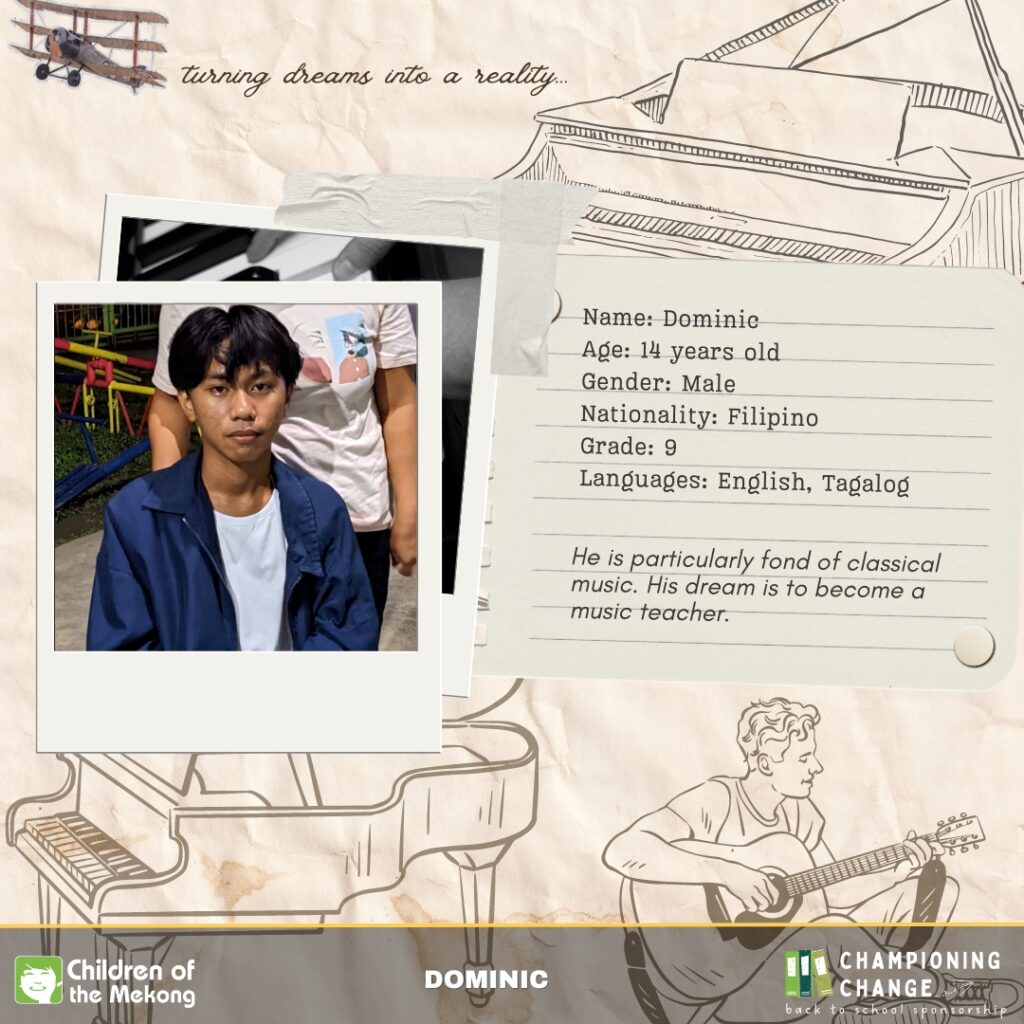
Dominic is a 14-year-old boy from San Luis, the Philippines. He is the eldest of three siblings and his parents are daily workers. Dominic is passionate with classical music and his dream is to become a music teacher. Sponsoring Dominic means giving him the chance to continue his education.
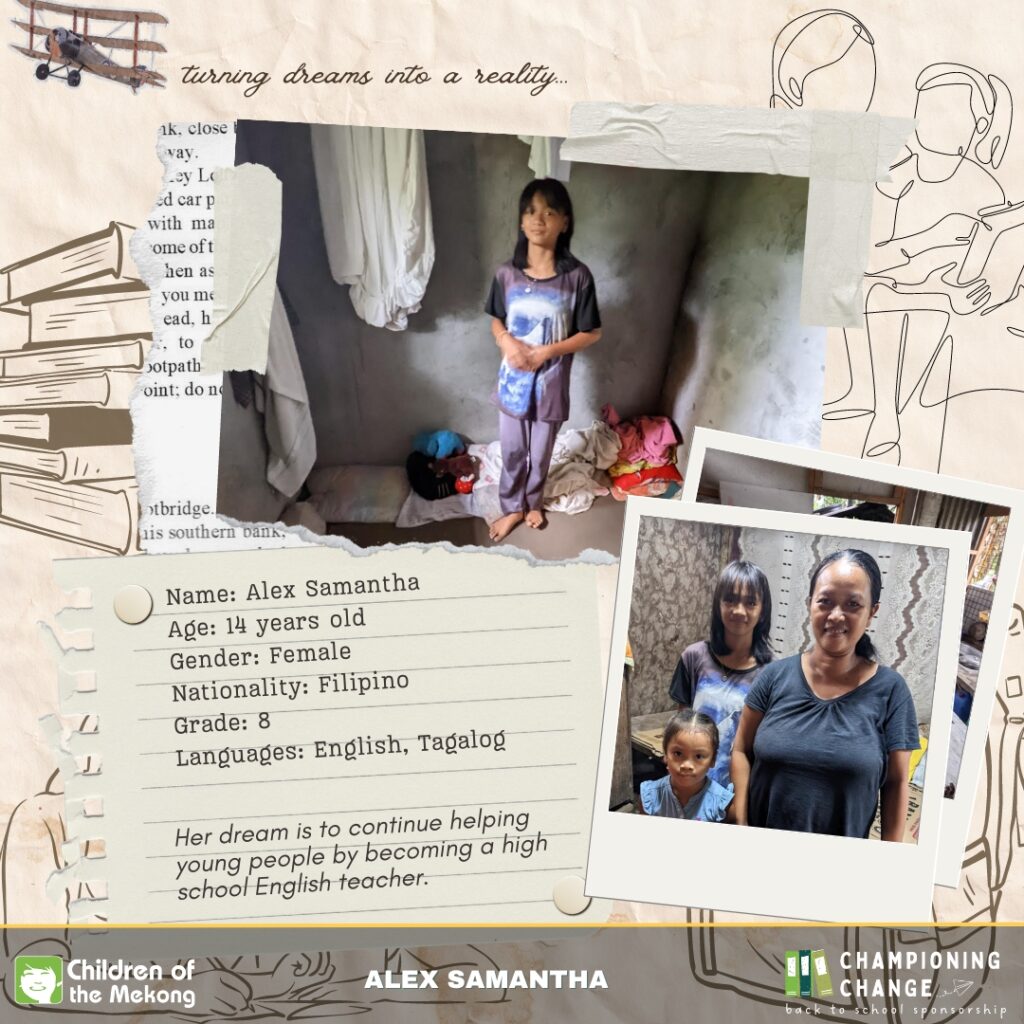
Samantha is a 14-year-old girl from San Luis, the Philippines. She has four siblings. Her mum washes laundry for a living, and her dad is a tricycle driver. Samantha is friendly and she is very good at mathematics. Sponsoring her will give her a chance to dream of a better life.
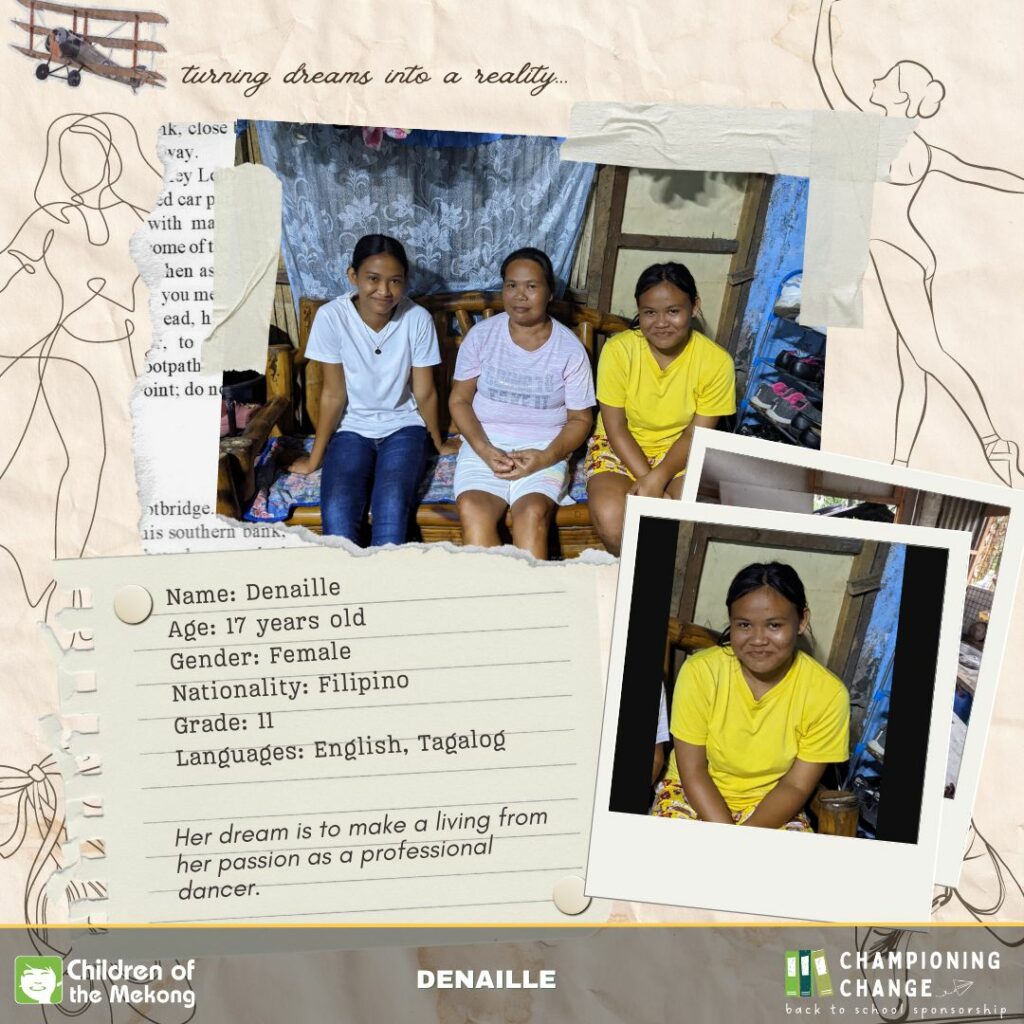
Denaille is a 17-year-old girl from San Luis, the Philippines. Her father passed away last year, and the family is in debt as they had to borrow money for treatment and funerals. Denaille studies in Grade 11. With a sponsorship, she won’t give up schooling despite the difficulties in her life.
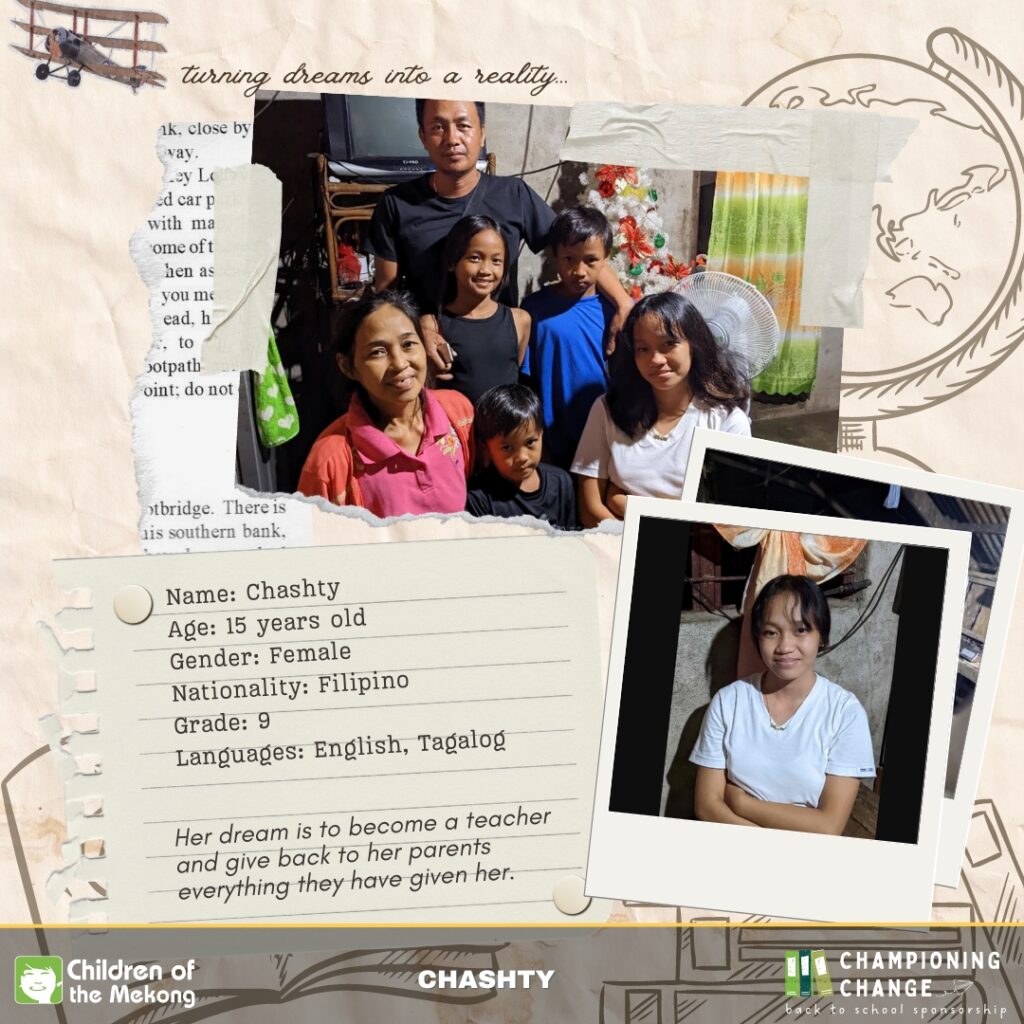
Chashty is a 15-year-old girl from San Luis, the Philippines. She is the eldest of 4 siblings, and her mum has cancer. Her dad had irregular earnings and the situation of the family is difficult. Her dream is to become a teacher! With a sponsorship, she will allow herself to dream of a better life.
The children we presented to you above are all from San Luis, in the Philippines. Children of the Mekong opened this programme recently as the needs are great. Those young people are at risk of dropping out of school, and sponsoring them will give them the chance to continue their education.
Would you like to sponsor a child in another country? Check out the other sponsorship programmes here.
What is child sponsorship?
For £28 or $35 a month, you enable your sponsored child in South-East Asia to go to school. Your sponsorship is a financial and moral support, which takes the form of correspondence. You can sponsor alone or as a family!
The distribution of sponsorship money may vary according to the situation of the sponsored child and their family (school transport, extra lessons, equipment, accommodation, etc.), but the objective remains the same: to enable the poorest children to go to school and take control of their future.

Once you’ve signed up to sponsor a child on our website, you’ll receive a Welcome Pack by email. This Welcome Pack will provide you with all the information that you need to start your sponsorship, getting to know better your sponsored child and where they live. The Welcome Pack includes:
- The profile of your Sponsored Child with a picture
- Information regarding who he/she is and their living conditions
- Information regarding the Sponsorship Programme that he/she belongs to
- Country Profile
- Address of correspondence of your Sponsored Child
- Template of letters to guide you for your first correspondence with your sponsored child
Our team is available to you by phone, email, or even meeting you in London.
Of course, it is! If you have the chance to go to Asia, don’t miss this beautiful opportunity to meet your Sponsored Child!
For your sponsored child, it’s a great opportunity to understand who is their sponsor is and how important they are to you, but also it’s a great way to see the impact of your sponsorship and to get to know your sponsored child better.
Contact us at: eugenie@childrenofthemekong.org so that we can help plan your visit with your Sponsored Child.
Learn more about visiting your sponsored child here.
